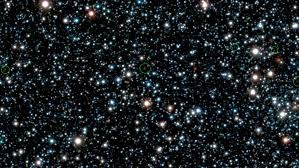What is cosmic mapping?
Cosmic maps function as time machines. The image becomes older as we move our gaze further away. We measure distances in terms of how long it takes light to reach us from a given distance. The Moon, for example, is one second away from us. The Sun will rise in 7 minutes. Our galaxy’s center (the Milky Way) is approximately 27 years away (we say 27 light-years or ly). Andromeda, the nearest galaxy to ours, is about 2.5 million light-years away. For cosmic maps, we also use parsecs, which are approximately 3.3 ly. Mpc, or millions of parsecs, is the unit of measurement for the largest cosmic maps. In those maps, Andromeda is about 1 million light-years away from the Milky Way. Local universe maps, such as the SDSS map below, have a radius of about 600Mpc. Each dot on the map represents a galaxy, and the closest dots, like Andromeda and the Milky Way, are separated by 1 million light-years.
Redshift, z, is another way to measure Cosmic Maps that corresponds more closely to how we measure distances. The redshift is the relative change in the wavelength of a galaxy’s spectra that we measure.
Cosmic map reveals a not-so-lumpy Universe
Cosmologists have produced the largest map yet of the Universe’s structure, and found that matter might be spread more evenly than previously thought.
The findings, which are part of the ongoing Dark Energy Survey (DES), help to map the distribution of matter by measuring how mass bends light, a phenomenon known as weak gravitational lensing. It was the first time the technique had been fed enough data to measure some of the most important features of cosmic evolution with precision comparable to maps generated from cosmic microwave background (CMB) data, which measure the afterglow of the Big Bang and are considered the gold standard of cosmology. “We believe that with these results, we are no longer the poor cousin” to other efforts, says DES leader Joshua Frieman, a cosmologist at Fermilab in Batavia, Illinois. “We now have results with comparable cosmological constraint power.”
Cosmic 3D mapping machine opens 5,000 robotic eyes
It was the first test of the Dark Energy Spectroscopic Instrument, or DESI, which is intended to investigate the mystery of dark energy, which accounts for approximately 68% of the universe and is speeding up its expansion.
The components of DESI, some of which were developed at the University of Arizona, are designed to automatically point at pre-selected groups of galaxies, gather their light, and then split that light into narrow bands of color to precisely map their distance from Earth and gauge how much the universe expanded as this light traveled to Earth. DESI can cycle through a new set of 5,000 galaxies every 20 minutes under ideal conditions.
DESI installation began in February 2018 at the Kitt Peak National Observatory’s Nicholas U. Mayall Telescope near Tucson. The most recent milestone marks the beginning of DESI’s final testing in preparation for the formal start of observations in early 2020.
DESI, like a powerful time machine, will peer deep into the universe’s infancy and early development – up to approximately 11 billion years ago – to create the most detailed 3D map of the universe.


